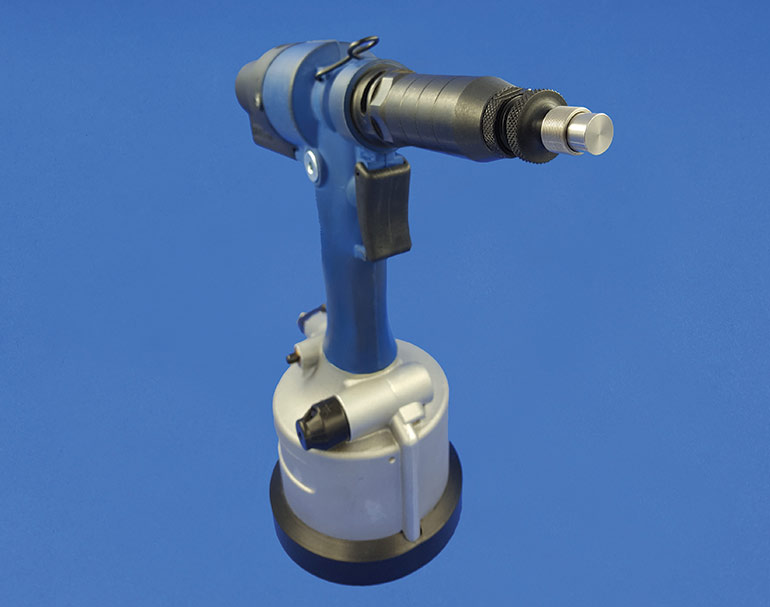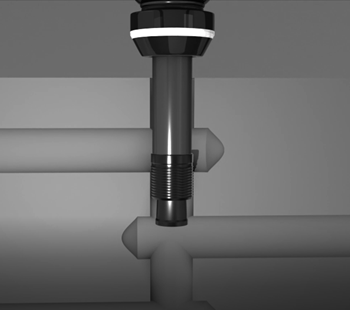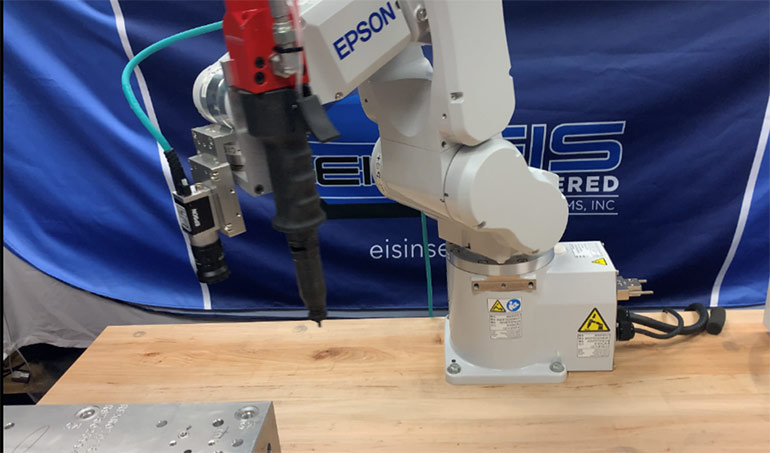Contributed by Brian Krieger, North American VP of Sales & Global Marketing Manager, EIS- Engineered Inserts & Systems Inc.
Over the years, sealing expansion plugs have evolved from the ball style expansion plug replacing standard threaded O-ring seals, to the rivet style and other adaptations. Unfortunately, all those offer only single tiered solutions.

The versatile EIS Pull Plug for permanent sealing of hydraulic systems
The EIS Pull Plug is a versatile design and is the only patented sealing expansion plug on the market. The most simplified hole required offers a wide tolerance (diameter 0.10/ –0.0 mm). Design engineers benefit through reducing the hole to the smallest diameter allowed, in most cases reducing the size of sealing plugs, therefore reducing the piece price. The design of the EIS Pull Plug uses an internal thread on the pin portion of the plug to thread into the installation tooling, which eliminates the mandrel that is required in the rivet style plugs. This in turn reduces the cost of the plugs.

With the simple hydraulic-pneumatic installation tooling, using its spin-pull technology, the operator simply presents the plug to the tooling, sensors automatically spin the plug onto the mandrel and automatically stop once engaged properly until ready to insert into hole for sealing.
With the simple hydraulic-pneumatic installation tooling, using its spin-pull technology, the operator simply presents the plug to the tooling, sensors automatically spin the plug onto the mandrel and automatically stop once engaged properly until ready to insert into hole for sealing. The operator presents the plug into the simplified hole while the tool’s nosepiece keeps the plug body slightly below flush of the material’s surface (or at any depth). The operator depresses the trigger, the tool pulls the pin into the plug with a predetermined and consistent stroke, causing a full radially expansion with multiple rings of sealing. Once it reaches the stroke, the tool reverses the spin, backing away from the 100% leak free permanent seal. Because of the mobility of the installation tooling, we can install the plugs on multiple surfaces quickly without complicated fixtures, presses or threading apparatuses.

With slight modifications, a standard EIS Pull Plug can be installed at any depth in an application.
The internal thread of the pin allows for more benefits; With slight modifications to the installation tooling, we can install a standard EIS Pull Plug at any depth in an application. For those parts surface mounted, the internal thread can be used for “Low Load Mounting” for wire harnesses, name badges, or the like. If it is needed for fluid restriction, EIS simply has orifice drilled into the pin allowing the EIS Pull Plug to be used as a restrictor, installed at any depth within the application reducing flow form one passage to the next.

EIS Pull Plugs, along with the help of end of arm tooling, can now be installed hands free with robotic tooling, fully automating the process.
One of the most significant problems EIS users tell us they struggle with is good labor. To help with this issue, EIS Pull Plugs, along with the help of end of arm tooling, can now be installed hands free with robotic tooling, fully automating the process. Using bowl feeders or preloaded plates, the robot is trained through jog and teach programming, to automatically thread the EIS Pull Plug on the mandrel, quickly bring it to the hole, install the plug, repeatably and without error.
Although the EIS Pull Plug is designed for permanent sealing, for certain applications a removable EIS Pull Plug version can be used and easily removed with tooling. In some cases, users can utilize the same hole and seal with a new plug, which is suitable for reworking or refurbishing manifolds.
EIS Inserts
www.eisinserts.com
Filed Under: Components Oil Coolers, Related Technologies